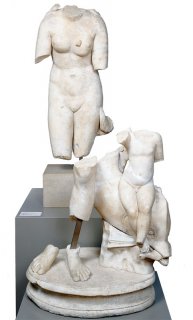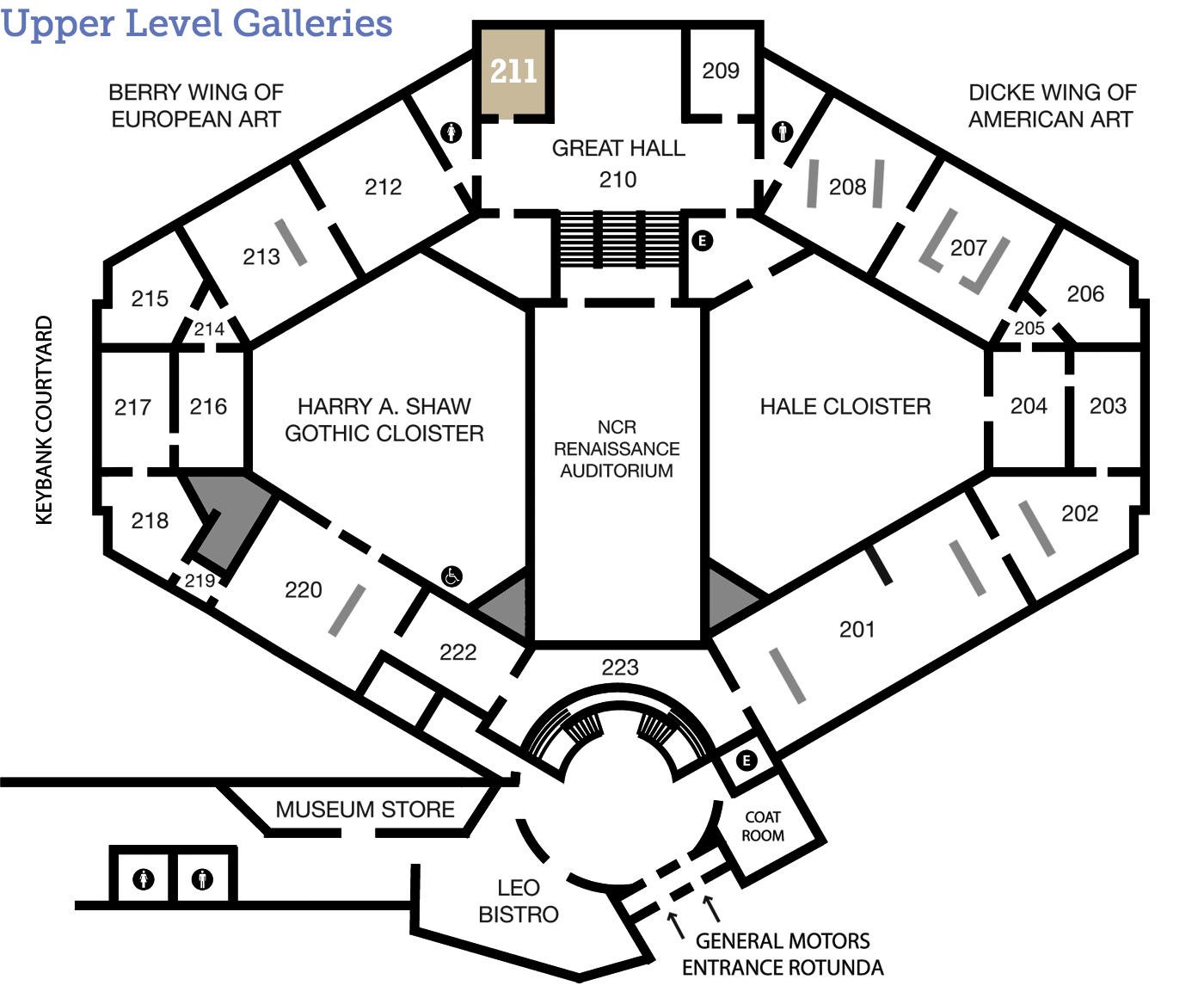
Greco-Roman
Aphrodite Pudica with Eros Astride a Dolphin
White marble Overall assembled: approximately 53 x 20 x 14 inches Museum purchase with funds provided by Mr. and Mrs. Ralf Kircher 1968.112
Ancient Beauty
What does love look like? How do you give shape to an idea? Marble statues of gods and goddesses like this fascinated ancient Romans who commissioned copies of earlier Greek versions, and they continue to inspire today.
A Day in the Life
The Body of a Goddess
Even though it is missing many pieces, including the head and arms, we can tell this is a statue of the Greek goddess Aphrodite based on similarities with other ancient examples, such as the Venus de Medici in the Uffizi in Florence and the Capatoline Venus in the Capatoline Museum in Rome. Who was Aphrodite and why is she naked? Find out in the following audio clip from Will South, Chief Curator at The DAI from 2009–2011.
Transcript:
Greek gods and goddesses were believed to be very much like people–falling in and out of love, becoming jealous, starting wars, or, heroically, coming to the aid of someone in need. Not surprisingly, Greek artists represented their gods in human form. However, the artists made their gods and goddesses appear as perfect and flawless as possible. This is Aphrodite, the Greek goddess of love. In Rome she was called Venus. The Romans greatly admired Greek art, and this statue is a Roman copy of an earlier Greek statue. Aphrodite was born out of the sea, and riding on a dolphin next to her we see Aphrodite’s son Eros, the god of love. According to legend, Aphrodite was born an adult and physically ideal. Before this sculpture was broken, you would have seen Aphrodite covering up her body–perhaps because she is shy, just coming out of the water and into the world for the first time.
Tools and Techniques
Turning Stone to Flesh
How would a sculptor have formed this statue out of a block of solid marble? Learn more about the tools and processes ancient artists used in the following video from the Getty Museum.
© Getty Museum
Behind the Scenes
Filling in the Details
When The DAI acquired this sculpture it was in many parts and missing some sections. The DAI decided to show a partial reconstruction like you see here instead of either showing only one part, like the torso, or adding reconstructed sections to make it “whole.”
Poll
What do you think of The DAI’s presentation?
Look Closer
Placing Sculpture
Today sculptures like this are often displayed so visitors can walk around and see all sides. Look closer at the back. The edge of the base is flat and the surface is rough; this indicates the statue was originally placed against a wall, perhaps in a niche in a garden of a wealthy Roman. Consider how your experience of the object would change if you could only see it from the front.
Just for Kids
Signs & Symbols
Dig Deeper
Arts Intersected
The Sculpture Speaks
Did You Know?
Expert Opinion
Look Around
About the Artist
Talk Back
Ideal
In ancient Greece and Rome, sculptures of gods and goddesses who were admired and worshipped were made in an ideal way, communicating an image of unattainable perfection. Where do you see a similar practice in today’s culture?

